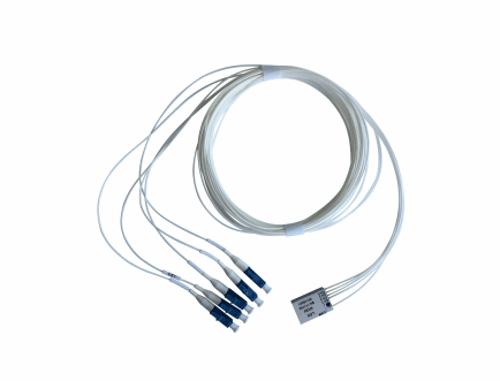The old users "translate" the ADSL network. "Laying the fiber network is not one step. First, the major cities and the cities in the Pearl River Delta are the main cities. The cities in cities like Guangzhou will not be laid for the time being. They are still connected by ADSL." According to sources from Guangdong Telecom, the new residential areas in Guangzhou, Shenzhen, Foshan and other major cities are determined to be fiber-optic access; the optical fiber lines in the old city are gradually being laid.
The conversion process is expected to last for three years. Within three years, the original copper-based ADSL network will gradually exit the market. For the old users who previously used ADSL networks, Guangdong Telecom will "encourage upgrades" and adopt a "translation" approach. The original 2M ADSL translates to the optical network for free, and the cost does not change. The reporter understands that at present, some residential districts in Guangzhou have begun to carry out the translating optical network of telecommunication users. Guangdong Telecom currently rents an OMU, which is worth about 500 yuan, for free for translating users.
In addition, if the user insists on not upgrading to the optical network, Guangdong Telecom will continue to use the original tariff provision service, or increase the rate for free, but after the previous contract package is over, it still needs to be upgraded to the optical network.
Analysts said that "bright back into copper" is a certain choice of traditional telecommunications business and business model transformation. The price of copper cables is high and the price of fiber optic cables is gradually lower. Moreover, fiber-optic cables allow ADSL over copper to be significantly faster than broadband, which can make it easier for broadband operators to supply digital services such as VOIP Internet telephony and IPTV Internet TV.
Upgraded Optical Network Tariffs to Consolidate Bundled Mobile Phone Services The reporter understands that if users want to upgrade to optical networks, they must bundle Guangdong Telecom’s mobile phone and fixed line services. The upgrade method is relatively simple. Select the appropriate package by directly increasing the price on the basis of Telecom Tianyi 3G package. For example, 12M (upstream rate of 512K) monthly subscription fee is based on the monthly fee of 189 yuan to enjoy 3G Internet version of the package plus 30 yuan, while 20M (upstream rate of 1M) monthly subscription fee is based on 189 packages plus 50 yuan . At present, the highest home optical network 100M, users need to choose 589 yuan monthly mobile phone package.
After upgrading to the optical network, users can obtain a free-to-air telecommunications ITV (ie, broadband Internet audio and video) worth RMB 40, in addition to experiencing a high-speed broadband life. According to reports, 20M, 50M, 100M speed broadband, Guangdong province unified pricing. With the current tariff plan, the absolute price of each optical cable network is increasing compared with the original copper cable ADSL broadband cable, but the average price per M level has dropped.
There are also doubts. Insiders said that 100M fiber access may be just a gimmick, because the computer hard disk write speed is 20 ~ 30M, and then the high rate is no good. In this regard, Guangdong Telecom sources said that the current push is still 20M, 100M users do not have to install. The higher bandwidth is to prepare for future IPTV and cloud services.
LAN WDM - LAN Wavelength Division Multiplex
LWDM is a wavelength division multiplexing Lan-WDM technology based on Ethernet channels. Its channel interval is 200~800GHz, this range is between DWDM (100GHz, 50GHz) and CWDM (about 3THz). LWDM uses 12 wavelengths in the O-band (1260nm~1360nm) range from 1269nm to 1332nm, with a wavelength interval of 4nm (1269.23, 1273.54, 1277.89, 1282.26, 1286.66, 1291.1, 1295.56, 1300.05, 1304.58, 1309.14, 1313.73 , 1318.35nm).

The characteristic of LWDM working wavelength is that it is located near zero dispersion, with small dispersion and good stability. At the same time, LWDM can support 12-wave 25G, the capacity is increased, and the optical fiber can be further saved.

Channel 1: Wavelength 1313.73nm, reuse the DML-1310 wavelength in 100G CWDM applications. Starting from this wavelength, the channel spacing of the wavelengths is about 4.5nm;
Channel 2: Wavelength 1309.14nm, which reuses the DML wavelength in 100G LanWDM applications;
Channel 3: Wavelength 1304.58nm, reuse the DML wavelength in 100G LanWDM application;
Channel 4: Wavelength 1300.05nm, reuse the DML wavelength in 100G LanWDM applications;
Channel 5: Wavelength 1295.56nm, which reuses the DML wavelength in 100G LanWDM applications;
Channel 6: Wavelength 1291.10nm, reuse the DML-1290 wavelength in 100G CWDM applications;
Channel 7: wavelength 1286.66nm, reuse the EML wavelength in 400G LanWDM applications;
Channel 8: wavelength 1282.26nm, reuse the EML wavelength in 400G LanWDM applications;
Channel 9: The wavelength is 1277.89nm, which reuses the EML wavelength in 400G LanWDM applications;
Channel 10: wavelength 1273.54nm, reuse the EML wavelength in 400G LanWDM applications;
Channel 11: The wavelength is 1269.23nm, which reuses the DML-1270 wavelength in 100G CWDM applications.
LAN WDM Splitter, LAN WDM
Shenzhen GL-COM Technology CO.,LTD. , https://www.szglcom.com